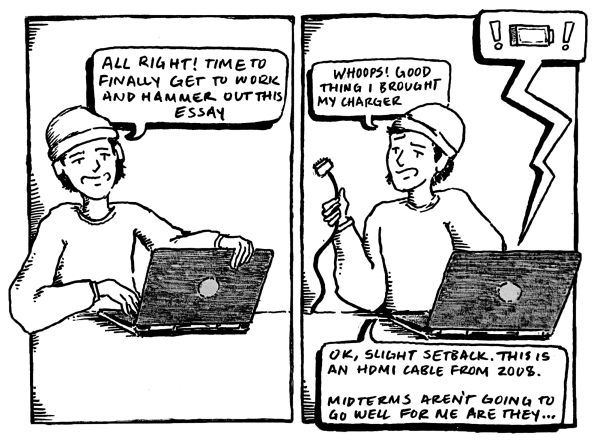What is the True Cost of Campus Dining?
It’s no secret that campus dining at Oberlin College has changed a lot over the past few years. It’s easy to get frustrated with the downsizing of the Oberlin co-ops, the often inconsistent quality of food available through AVI Foodsystems, and the constant additions of Flex upcharges at dining venues across campus. I often hear fellow students complaining about the cost and quality of the food at Oberlin. So I ask — why is the meal plan so expensive? Are there good reasons for students to be required to purchase a meal plan? What should change about Oberlin’s approach to campus dining?
On the Cost and Payment Options page on Oberlin’s website, the GoYeo plan which first- and second-years are required to purchase (unless they get into a co-op) is priced at $4,367 per semester. Minus the $200 of flex included in each semester of the plan, if a student eats four meals on each of the 104 days of the summer semester, then the value of each meal swipe comes out to about $10 — the same cost of a meal at Stevenson Dining Hall if you were to pay out of pocket. So if you use all your meal swipes, you’re about breaking even. But if you don’t use all of your swipes, like many students, the College plan starts to cost a lot more. If you mostly buy food at DeCafé, you might end up using a swipe to pay for as little as a few bags of chips and water, which is about $5 worth of food and half the value of a meal swipe. Buying sushi and water ends up with a value of around $6. Basically, anything but the most efficient use of the GoYeo meal plan ends up putting students at a loss. If you regularly use your fourth meal swipe at half value like this, you’re losing something like $546 per semester. If you only eat three meals a day, you lose more like $1,092. At Azariah’s, it costs a meal swipe to buy a dirty chai latte, something that costs approximately $5 at Slow Train. I regularly pay the equivalent of $20 (two meal swipes) in the morning for a delicious coffee, an old soggy sandwich, and some carrots.
The quality of the food provided by AVI is inconsistent. I am reminded of a fruit cup that gave my friend food poisoning, bags of chips that were given away for free because they had expired, and plastic wrapped sandwiches that were soaked through with condensation. However, it’s easy to focus on negative experiences. I’ve had days where the food at Stevie was excellent, and being able to store bags of chips in my room from DeCafé runs makes snacking while studying far more convenient.
There are also benefits to eating and living on campus. For many students, dining facilities are just a minute’s walk from where they live, which makes it easy to take a quick study break to grab food. Of course, this isn’t true for all students, especially for students who live on South Campus, so it doesn’t make sense to factor that into the cost of a meal plan that most students must use. Furthermore, dining in Stevie is a great way to meet people and build friendships. Standardizing dining subtly gives students common ground and community in ways that would be absent if some students chose to buy all their food themselves. Again, however, this disproportionately benefits students who live near dining halls.
I think that there is certainly some financial motivation to the College requiring the highest cost meal plan for students’ first two years (with the exception of those who join co-ops). Institutions of higher education across the country are struggling right now, and Oberlin’s administration has made no attempt to hide the kinds of steps it’s willing to take to cut costs. This was apparent in the union-busting debacle of last year and the permanent shutdown of some co-ops. Many students rely on the co-ops as an alternative dining plan that reduces the cost of attending an already expensive college. Oberlin’s administration should value the benefits co-ops bring in terms of affordability, student life, and the culture of Oberlin College.
With all this in mind, I think the most pressing problems with Campus Dining Services are the downsizing of co-ops, the distance of many of the dining halls from South Campus, and the inconsistency of the value of meal swipes at venues other than Stevie. The College has already implemented changes that give students on South campus more options by opening Umami, Clarity, and Heritage. However, these changes hurt the Oberlin Student Cooperative Association, and so the College should consider an alternative solution. The College should also reopen the Kosher Halal Co-op and reverse the policies that diminished OSCA and Oberlin’s unions. Finally, if the College feels as though it needs most students to pay the full cost of the GoYeo meal plan in order to stay financially sound, any unused value in meal swipes at the end of each week should be transferred to students’ flex accounts, so that students can get the full value of the meal plan they pay for. Any dining plan the College implements should work to benefit the students and service workers first. Profit should always be a secondary concern.


